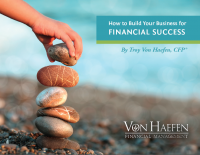
I recently posted an article regarding the importance of correctly measuring your financial growth by using net worth as the measuring stick. The purpose of the article was to outline the difference in investment growth and net worth growth. You can revisit the article by clicking here.
Now that we know how to measure growth and the importance of understanding net worth, what do we do next? How do we know if our net worth is where it should be? Are we on track financially?
A fellow colleague and veteran fee-only advisor, Bert Whitehead, has developed a set of guide posts to help us check our progress. He calls this tool The Financial Lifecycle. The tool is based on different phases one would travel through in a normal and healthy financial life. Here’s an overview which may help you determine whether you are on track or not.
Building the Foundation
This initial phase occurs when you become self sufficient. For most people this phase extends from age 20 to age 30. During this time your net worth is less than your annual income, and the main financial focus should be on building the foundation of your financial house….establishing liquidity and focusing on protection versus taking financial risk.
Remember, to determine your net worth you simply total all of your assets and subtract all of your liabilities. If your net worth is less than your current annual income, you are in the building the foundation phase…..no matter what age you are.
Early Accumulation
The Early Accumulation phase occurs when your net worth is 1 to 3 times your annual income. This phase usually last from age 30 to age 40. An important aspect of this phase is diversifying into stocks and bonds. This is when growth begins. If your net worth is 1-3 times your annual income and you are between the ages 30 to 40, you are on track.
For example, a married couple earning $200k a year should have a net worth of $200k at the beginning of the early accumulation phase (approximately age 30) and a net worth of 600k at the end of early accumulation (approximately age 40).
Rapid Accumulation
Rapid Accumulation is the phase where growth accelerates and usually occurs between the ages of 40 and 55. The period begins when net worth is more than 3 times your annual income AND investment earnings (or investment growth) exceed the annual savings rate. The second part of the equation may be a bit difficult to understand. This piece of the equation is meant to ensure balance.
Going back to the above example, let’s say the married couple is now in their mid 40s with a net worth of $800K, but the bulk of their net worth (say $650K) is in real estate equity. With only $150k of the net worth in investable assets, they are not yet in the rapid accumulation phase. This is because their investment growth or earnings will not exceed their annual savings rate (assuming they are doing the right thing and saving at least 10% of their income). Again, the purpose here is to ensure balance by having enough exposure to growth opportunities…..hence the name rapid accumulation!
Another important aspect of rapid accumulation is strategy. During this phase the strategy should be to focus risk and optimize tax efficiency. Focusing risk in areas of potential growth, while striving to maximize tax strategies, is a method that can save thousands of dollars. For a couple similar to the example, it’s not uncommon for me to find $10,000 or more in tax savings by utilizing tax efficient strategies.
Financial Independence
Financial independence has a nice ring to it. It sounds like something we all want to achieve, right? So, what is financial independence?
Financial independence is achieved when net worth is at least 10 times living expenses and investment earnings (or growth) exceed 50% of living expenses. Again, the investment earnings part is to ensure balance. The age benchmark for this part of the financial lifecycle is from ages 55-70.
For our couple in the example, their $200k income may produce living expenses of roughly $140k after taxes and such. This would mean they need to have a net worth of $1.4M, and their investments should produce earnings or growth of $70k on average per year.
The strategy for financial independence is great: enjoy life! This means doing what you want to do and not always what you have to do when it comes to employment. Many folks in this stage start their own businesses doing what they enjoy. Others work fewer hours or change professions to a career they’ve always dreamed of.
Conservation
The conservation phase of the lifecycle usually occurs from ages 70-85 and net worth is 10-15 times annual living expenses. In this phase the focus is to live off investment earnings and retirement pensions while reducing investment risk.
While it may sound like all the work is done when this phase is achieved, it’s not the case. Tax efficiency is still a matter of importance when it comes to the distribution of assets. Coordinating asset distributions and withdrawals through tax efficient strategies will result in tax savings, which will preserve family wealth leading to legacy planning.
Distribution and Sunset
These two phases, which are separate phases, focus on gifting to family and charities, as well as focusing on estate tax reduction strategies. This phase is entered when we have more money than we can spend in our lifetime.
Again, while the idea of having more money than we can spend sounds dreamy, we must continue to focus our efforts on wise and prudent planning. Estate planning laws change quite often and striving to reduce estate taxes should always be of importance. Gifting to family and charities is another important element of this phase. Giving brings about an altruistic component that many seek during this time of their life.
What if I am not on track?
For some, the exposure to this lifecycle brings about a realization that their personal finances are not where they should be. So, how do we catch up? Often I hear talking heads speak to this question and suggest taking on more risk to play catch up. I don’t agree with this strategy. I believe there are two ways to play catch up: by controlling the things we can control (control how much we spend, how much we save, and how much we pay in taxes) and incorporating the Five Fundamental of Financial Success. You can read about the Five Fundamentals here.
If you find yourself behind, don’t panic. Simply develop a plan that incorporates a comprehensive approach. I would NOT suggest additional gambling techniques such as taking on riskier investments. Control the things you can control by creating efficiencies within your financial world. You can read an article I wrote on this topic here.
In conclusion, it’s important to realize that the Financial Lifecycle is simply a guide post and not a hard and fast rule. Everyone has unique financial characteristics. We all have different needs and wants, so it’s important to understand this is a tool for us to use to determine whether we are in the ballpark when it comes to financial health.
I would encourage you to do the exercise and find you place on the Lifecycle. Are you on track? If not, why?
I always enjoy hearing your feedback, so don’t be shy…..let me know what you think.

